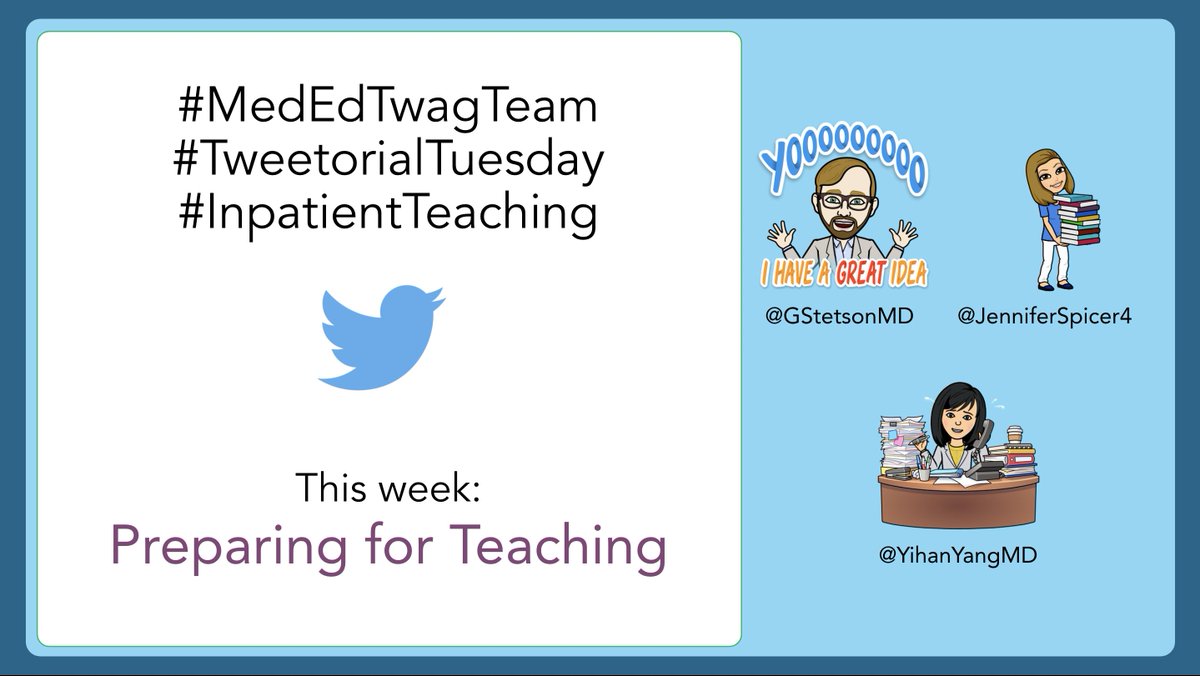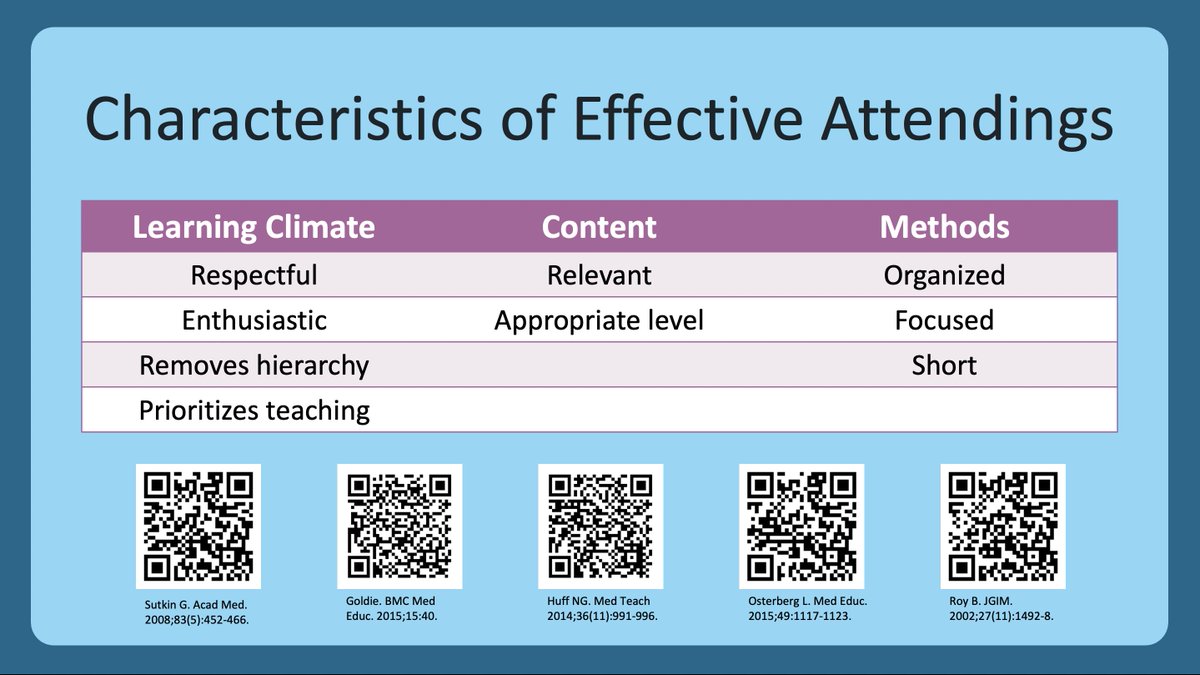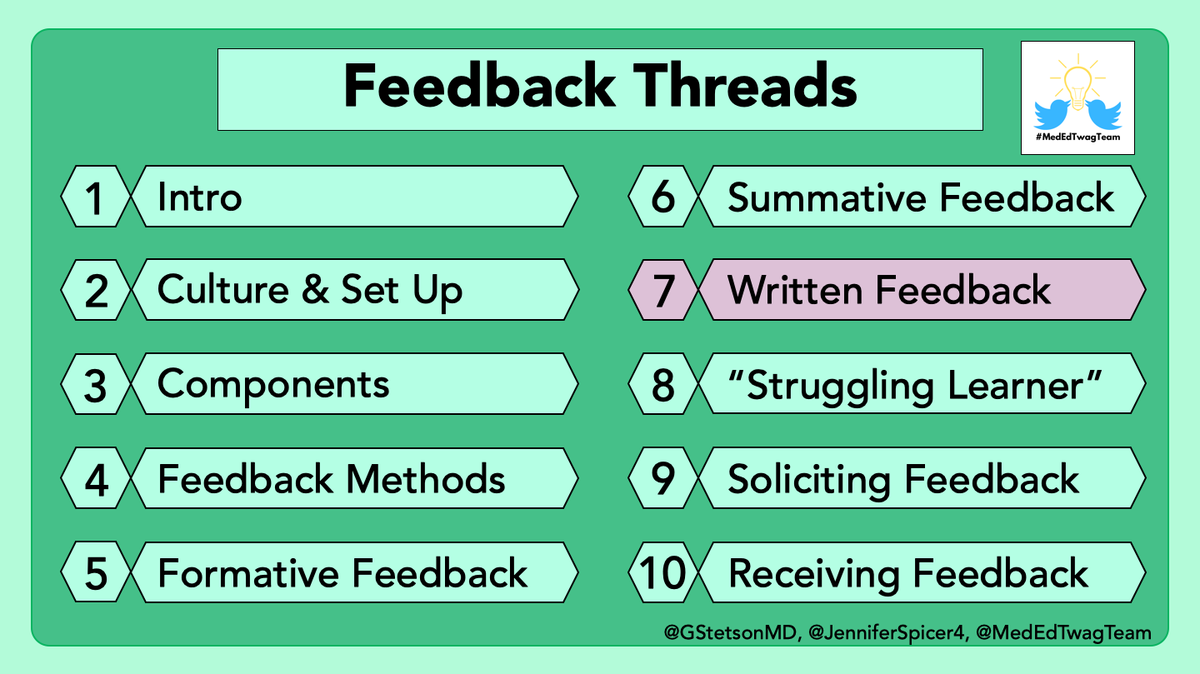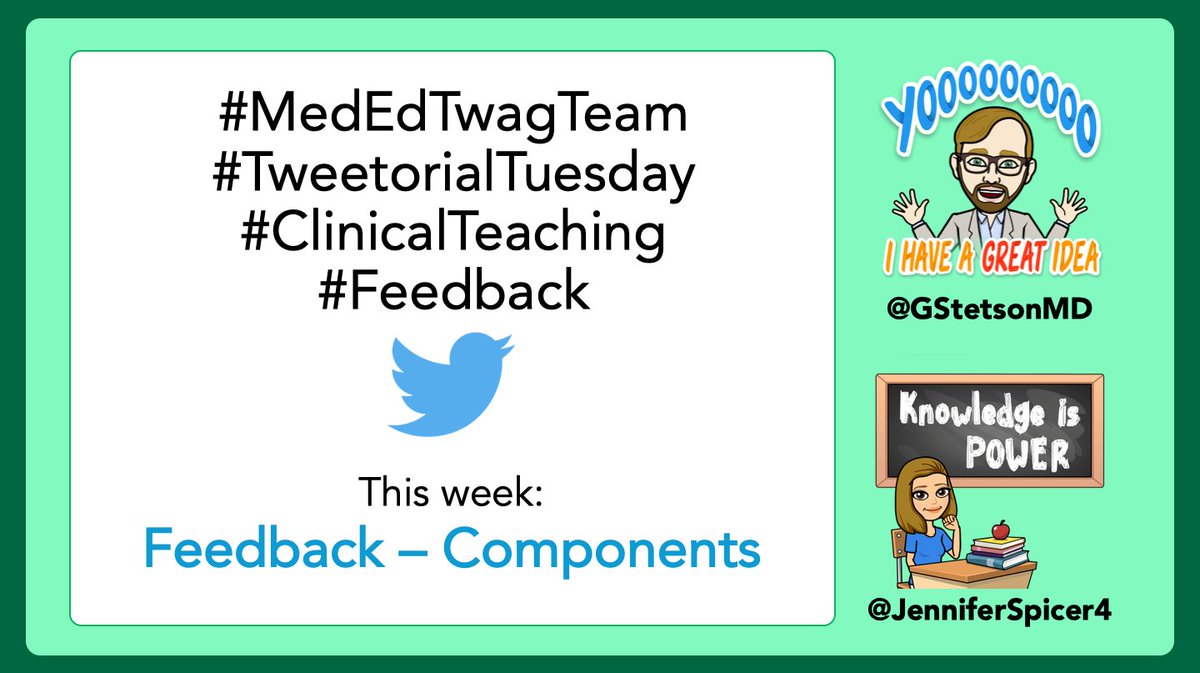
1/ You are standing in front of your team, getting ready to teach about diabetic foot infections.
HOW will you get them interested in this topic?
And how are you going to teach so that EVERYONE learns, from student all the way up to the fellow?!
#MedEd #MedTwitter: HELP!
HOW will you get them interested in this topic?
And how are you going to teach so that EVERYONE learns, from student all the way up to the fellow?!
#MedEd #MedTwitter: HELP!

2/ This week, I will share tips on teaching to multiple learner levels AND interests to help you effectively engage your entire team during inpatient teaching sessions.
It's another #TweetorialTuesday from the @MedEdTwagTeam for our #MedTwitter & #MedEd friends.
It's another #TweetorialTuesday from the @MedEdTwagTeam for our #MedTwitter & #MedEd friends.

3/ You have a team of learners and a patient to discuss.
How will you make the teaching both INTERESTING & RELEVANT for your learners?
I mean, you're teaching about diabetic foot infection. Everyone's going to 😴💤 as soon as you start teaching. How can you keep them engaged?!
How will you make the teaching both INTERESTING & RELEVANT for your learners?
I mean, you're teaching about diabetic foot infection. Everyone's going to 😴💤 as soon as you start teaching. How can you keep them engaged?!

4/ There are endless things you can teach:
Therefore, to keep all learners engaged, try to pick something that aligns with content that they either NEED or WANT to know to help them now (on rotations/exams) or in the future (for their careers).
https://twitter.com/GStetsonMD/status/1442894343526699009
Therefore, to keep all learners engaged, try to pick something that aligns with content that they either NEED or WANT to know to help them now (on rotations/exams) or in the future (for their careers).
5/ Now, the problem is, many of us have difficulty remembering WHAT content is appropriate for each learner level.
I usually look at:
1⃣Rotation/clerkship objectives for that learner
2⃣Review books or questions specific for that learner level (e.g., MKSAP for IM residents)
I usually look at:
1⃣Rotation/clerkship objectives for that learner
2⃣Review books or questions specific for that learner level (e.g., MKSAP for IM residents)
6/ And then I get to know my learners and their goals in order to tailor teaching specifically to them.
Check out @YihanYangMD's tweetorial on "shared goal-setting" if you missed it last week for details on how to do that effectively!
Check out @YihanYangMD's tweetorial on "shared goal-setting" if you missed it last week for details on how to do that effectively!
https://twitter.com/YihanYangMD/status/1445412708006850571
7/ Here are examples of teaching points for this patient taking into account my learners' current knowledge & interests. 

8/ Clearly every teaching point can’t be relevant to all learners. Instead, I try to ensure that at least one teaching point per day is targeted to each learner.
And I try to match it to their career goals - it increases motivation and shows them I care about their interests.
And I try to match it to their career goals - it increases motivation and shows them I care about their interests.
9/ Once I decide WHAT to teach, I consider HOW to teach it.
I've found 3 methods that help me engage all learners, regardless of their level:
1⃣ Learners serving as teachers
2⃣ Group discussion about a case/question
3⃣ Targeted questions/points for each learner
I've found 3 methods that help me engage all learners, regardless of their level:
1⃣ Learners serving as teachers
2⃣ Group discussion about a case/question
3⃣ Targeted questions/points for each learner

10/ Learners can serve as near peer teachers to the rest of the team. Teaching helps them learn the material better AND engages them in the session even if they know the information.
I use this method when I have a learner who is high-performing or has a unique interest/skill.
I use this method when I have a learner who is high-performing or has a unique interest/skill.

11/ Having learners work through a case or question together results in peer teaching AND allows you, as the teacher, to see potential knowledge gaps. This serves as a needs assessment for your own teaching! 

12/ Finally, ask questions that are fair & appropriate for each learner.
I've found this table from this article in @MedTeachJournal to be helpful in thinking about questions that promote multi-level inpatient teaching.
tandfonline.com/doi/full/10.31…
I've found this table from this article in @MedTeachJournal to be helpful in thinking about questions that promote multi-level inpatient teaching.
tandfonline.com/doi/full/10.31…

13/ Here’s an example of teaching strategies I could use to engage all learners during a discussion of this patient.
Clearly this takes time. And you don’t need to ask all these questions. Just remember to engage all learners in the discussion!
Clearly this takes time. And you don’t need to ask all these questions. Just remember to engage all learners in the discussion!

14/ So, in summary, consider how you can engage ALL learners on your team during teaching, regardless of their current learner level, prior experiences, and future interests.
It seems tough, but it's actually easier than you think!
It seems tough, but it's actually easier than you think!

15/ What are some things YOU do to involve all learners on your teams?
Don’t forget to join us next week when @YihanYangMD will provide some general bedside teaching tips.
And follow @GStetsonMD & @YihanYangMD so you don't miss anything from @MedEdTwagTeam!
Don’t forget to join us next week when @YihanYangMD will provide some general bedside teaching tips.
And follow @GStetsonMD & @YihanYangMD so you don't miss anything from @MedEdTwagTeam!

• • •
Missing some Tweet in this thread? You can try to
force a refresh




















